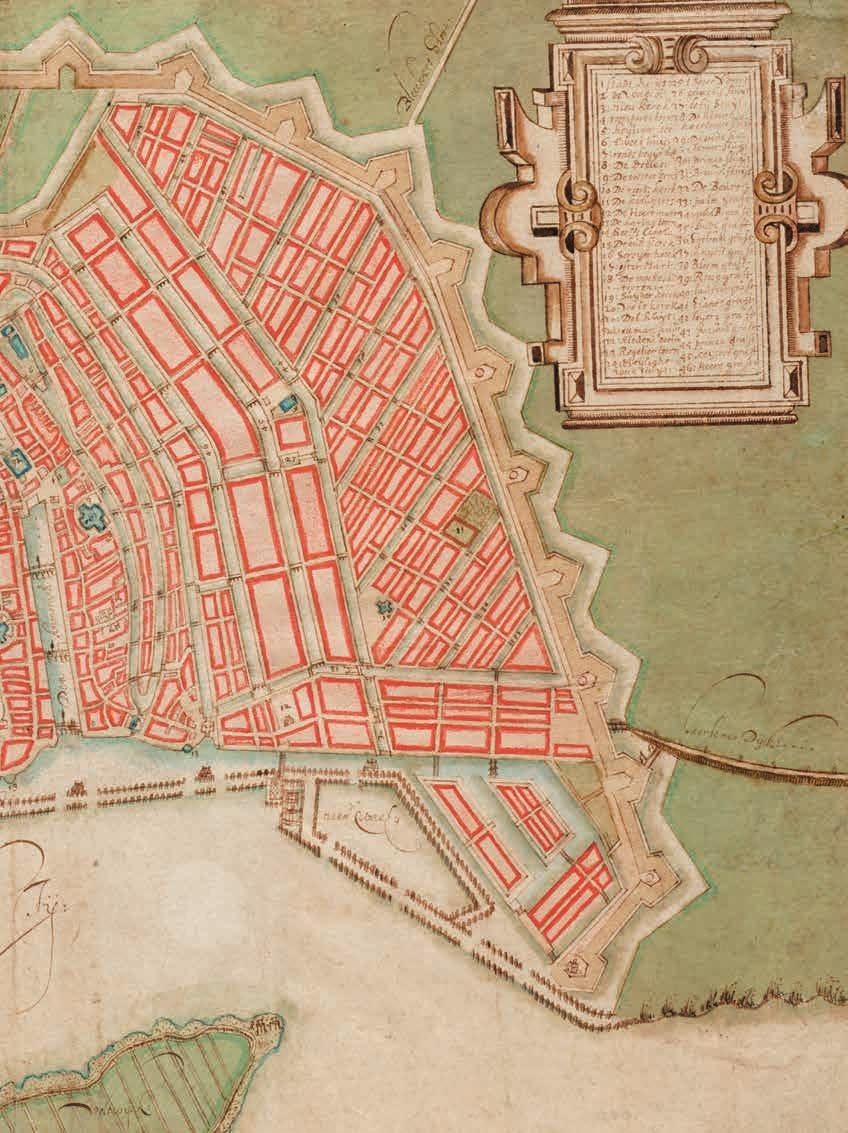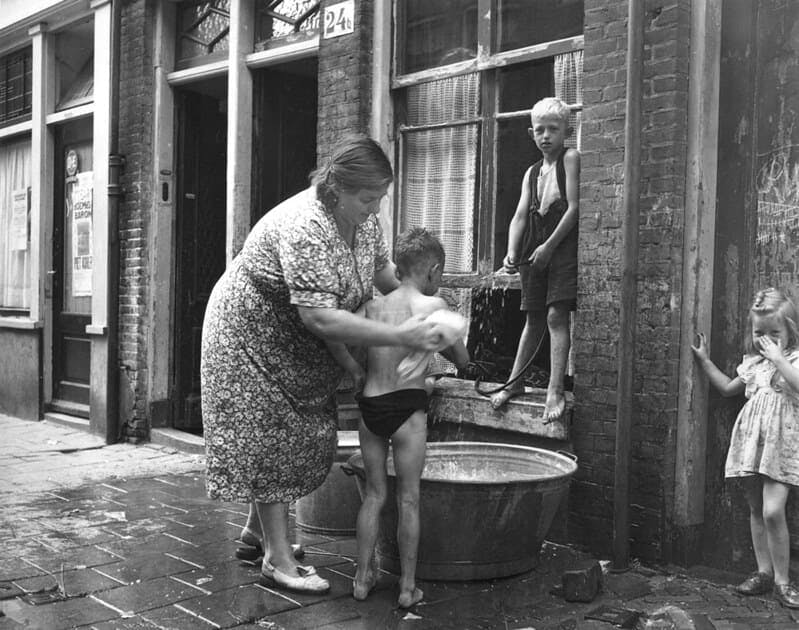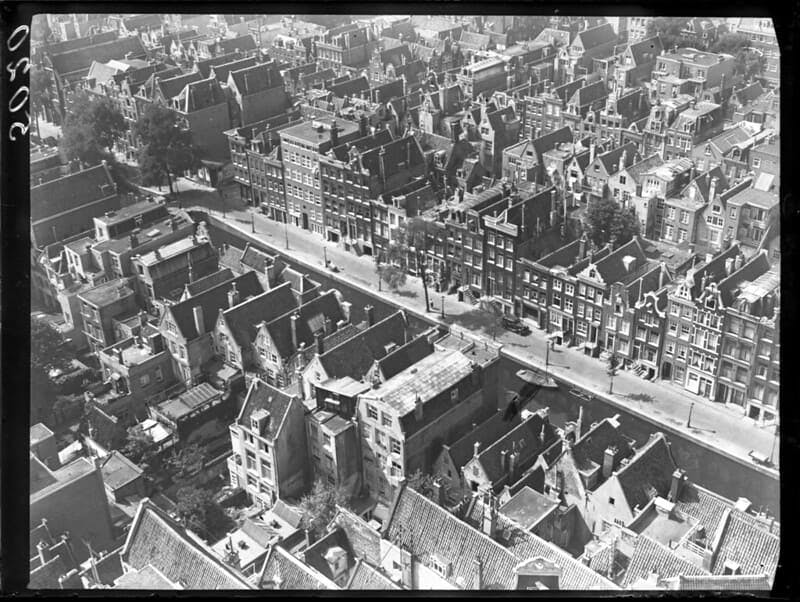Table of contents
Photo by: IISG
The Jordaan is one of the more popular neighborhoods of Amsterdam. The history of the Jordaan did not start with good coffee shops and cafés. Therefore, I will take you through the history of the Jordaan.
The origin of the Jordaan
The establishment of the Jordaan, like many other neighborhoods in Amsterdam, was related to Amsterdam's growing population. From 1600-1650, the population almost tripled.

Map of the city expansion, clearly visible: the Jordaan and the canal belt.
The neighborhood was part of the city expansion 'Third Explanation', which took place in 1613. To us, the name Jordaan sounds very normal, but originally this was not the name of the neighborhood. In the Third Explanation, the neighborhood was called 'Het Nieuwe Werck'.
Jordaan comes from the French Jardin
According to a seventeenth-century explanation, the name Jordaan is due to the arrival of French migrants. French migrants (mainly escaped Protestants) who lived in the neighborhood could find their way to their home by always asking for a garden located on the Elandstraat. If they were at this garden, they could easily find their house. The word jardin means 'garden' in French. Later this would change to jordaan.
Street names reveal the history
If you take a walk around the neighborhood today, the street names still tell us a lot about the activities that took place in the area. For example, the name of the filled Elandsgracht is associated with the fact that a lot of trading was done in moose skins at this location. These moose skins came from Archangelsk, a city in Russia, and were processed in Amsterdam.
The Looiersgracht and Huidenstraat, which are located in the vicinity of the Elandsgracht, point to the trade and processing of animal skins. Nowadays, the Jordaan may well be one of the best known and cosiest neighborhoods in the city and it is sometimes difficult to imagine that the neighborhood was once in such a bad state.
Jordaan as a refuge neighborhood
Today, no one doubts anymore that the Jordaan is perhaps the best known working-class neighborhood in the Netherlands. That working-class character of the neighborhood arose shortly after its construction.
This happened because the luxury canal belt (intended for the rich) was located directly next to the Jordaan. The canal belt consists of the famous canals: the Prinsengracht, the Keizersgracht, the Herengracht and Singel. The mnemonic Piet-Koop-Hoge-Schoenen still comes in handy today to remember the order of the canals!
The area behind the Prinsengracht (the Jordaan) thus served as a kind of refuge neighborhood for people whose work would disrupt the living pleasure of the rich on the canal. The fact that the Looiersgracht, for example, is located in the Jordaan has to do with this. The washing of leather by tanners released a terrible stench. It was of course unthinkable that the rich on the canal would smell this stench.
Rich and poor
The Prinsengracht was thus the dividing line between the world of the rich on the canal belt, and the middle class in the Jordaan. The Prinsengracht was therefore often seen as a less luxurious canal than the Keizers-, Herengracht or Singel.
It is almost inconceivable that the Jordaan was the second poorest neighborhood in the city in the first half of the nineteenth century. Only the Jordenbuurt of Amsterdam was even poorer. Today in 2022, the Jordaan is one of the most expensive and popular neighborhoods in the city.

Photo by: IISG
'Open sewers'
The conditions in the nineteenth century Jordaan were not good. Large families, with sometimes up to nine children, lived in damp and dilapidated houses. Also, rubbish was thrown on the street and contemporaries wrote 'As long as many canals are nothing more than open sewers'.
The filthy conditions culminated when cholera broke out in 1832. A cause of the disease would be the 'malignant vapors' that had risen from various canals. Also, the water in the canal was so dirty that in 1894 it was reported in the newspaper that 'When the Elandsgracht was not yet filled, this ditch could already be called harmful to health due to insufficient flow and other causes'.
To stop the spread of the poisonous vapors, the canals would have to be filled in.Without this intervention, theJordaan would have had eleven canals instead of the five canals we know today.
Other information about the Jordaan in Amsterdam:








